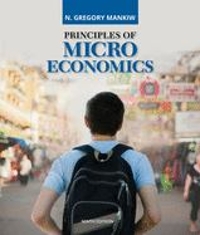
These are practice problems;
Problem 1;
Suppose that for the following linear regression model y=zr+s, IEE[e|1]=U the form of a skedastic function is E [ails] = anew}, where h[-) is a known smooth function, and if is an additional parameter vector. Compare asymp totic variances of Optinnal GMM estimators of ,3 when only the rst restriction or both restrictioris are employed. Under what conditions does including the second restriction into a. set of moment restrictions reduce asymptotic variance? What if the function h(-) does not depend on ,6? What if in addition the distribution of c conditional on :c is symmetric? Consider the regression y= arte, E[ex] =0. where all variables are scalars. The random sample {y,, 2;}" is available. 1. The researcher also suspects that y, conditional on a, is distributed symmetrically around the conditional mean. Devise a Hausman specification test for this symmetry. Be specific and give all details at all stages when constructing the test. 2. Suppose that even though the Hausman test rejects symmetry, the researcher uses the as- sumption that ex ~ /(0, o'). Derive the asymptotic properties of the QML estimator of a.15.3 Optimal instrumentation of consumption function Consider the model q=41+15y2r+eh where Cd; is consumption at 1. y: is income at t, and all variables are jointly stationary. There is endogeneity in income, however, so that e; is not mean independent of y;. Howeverj the lagged values of income are predetermined, so e: is mean independent of the past history of y: and q: E [elmh 31-11 Ell21 Con - - -] = 0. Suppose a long time series on e; and y; is available. Untline how you would estimate the model parameters most efciently. Consider an ARH) ARCH {1] model: It = oral + st 1where the distribution of Es conditional on I_1 is symmetric around {1' with E[EEIIt_1] = (i 0:) + CEEE_1, where [l r: pm: if. 1 and If. = {Iii Tt_1, . . .} . 1. Let the space of admissible instruments for estimation of the 1412(1) part be .3; = {iti31_g, SJ]. 053 "5:. DO} . Using the optimMity condition, nd the optimal instrument as a function of the model para meters p and or. Outline how to construct its feasible version. 2. Use your intuition to speculate on relative efciency of the optimal instrument you found in part 1 versus the optimal instrument based on the conditional moment restriction E'[E1|Ig_1] = . Consider an AR(1) model at = prt-1 + et, where the disturbance et is generated as et = 17-1, where n, is an IID sequence with mean zero and variance one. 1. Show that E[etrt_;] = 0 for all j 2 1. Find the optimal instrument based on this system of unconditional moment restrictions. How many lags of r, does it employ? Outline how to construct its feasible version. 2. Show that EelIt_1] = 0, where It = {It, It_1,...} . Find the optimal instrument based on this conditional moment restriction. Outline how to construct its feasible version, or, if that is impossible, explain why












